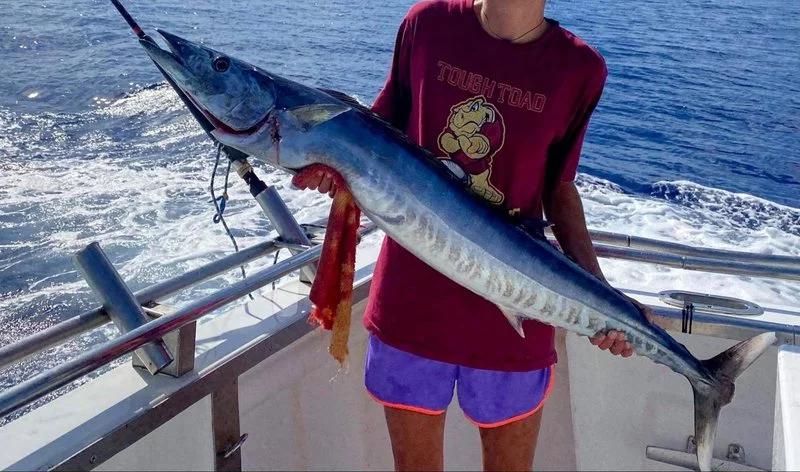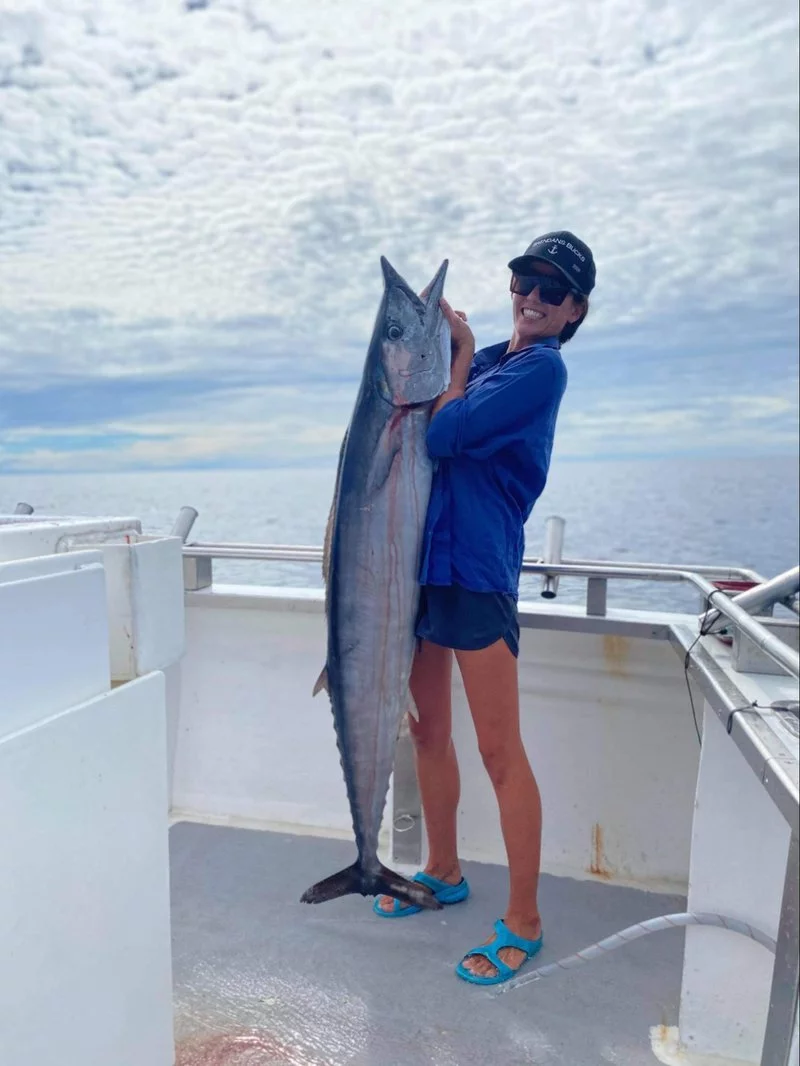When people hear the word mackerel the first fish that comes to mind is the giant, delicious
eating fish the Spanish mackerel. However mackerel is the common name given to a group of fish in
the family Scombridae. This family includes other large groups of pelagic fish such as tuna and
bonitos. There are currently about 21 different species which are classed as mackerel fish, those
we are familiar with in Australian waters fall under the Spanish mackerel group and include
species like the Spanish mackerel, wahoo, shark mackerel and spotted mackerel. These fish are an
important food source world wide and are rich in omega-3 fatty acids. Not only are they good
eating but some of the larger species such as the wahoo are considered excellent game fish and
are targeted by sport fisherman for their fighting ability.

This group of fish can be found in both temperate and tropical seas worldwide. They are pelagic species which means they inhabit offshore open waters. They can be found swimming close to the surface or at depths of over 100 meters. The Spanish mackerel, one of the more common species in Australian waters can be found in the Indo-Pacific region from South Africa to Australia. In Australia this species can be found from the south of Western Australia in Geographe Bay, north and around down to Tasmania. The adults can be found living around coral reefs and along reef drop offs in current lines, juveniles prefer to live closer to shore in more sheltered waters and will frequent estuaries and creeks.
Fish in the mackerel group are slim, streamlined and cylindrical in shape, this allows them to move rapidly through the water. They have two dorsal fins and numerous finlets behind these on both the dorsal and ventral sides. The scales of mackerel, like tuna are very small and they have a countershaded colouring, darker colour on top and lighter underneath. This helps the fish to camouflage in the water column, it becomes harder to see from both above and below. The maximum size depends on the species but some species like the Spanish mackerel can reach over 2 meters and weigh over 42 kilograms.

Before they reach their adult size the mackerel start their lives out as tiny eggs drifting in the oceans currents. These tiny eggs will float near the top of the water column until they hatch, once hatched the larval fish will continue to remain near the surface where it is warmer and there is an abundant supply of planktonic food. As they continue to develop the larvae will begin to move inshore into sheltered habitats like estuaries where they will spend their juvenile phase. In these nearshore habitats the juvenile mackerel will feed on smaller fish and crustaceans. Once they have reached the adult stage of their life cycle they will move back out to the pelagic habitats they are commonly found in.
Mackerel are voracious and active predators in both their juvenile and adult stages. They feed mainly on smaller fish, squid and even shrimp. These guys are highly sought after sport fish so if landing one is on your bucket list the Whitsundays is the perfect place for it.Their big appetite and tendency to eat anything available means that Spanish mackerel will aggressively take both lures and baits. They also feed at different depths so using tackle which targets a wider range will give you a higher chance of catching one. A wire trace may also be handy as these large predators have very sharp teeth which can cut through fishing line with ease.



